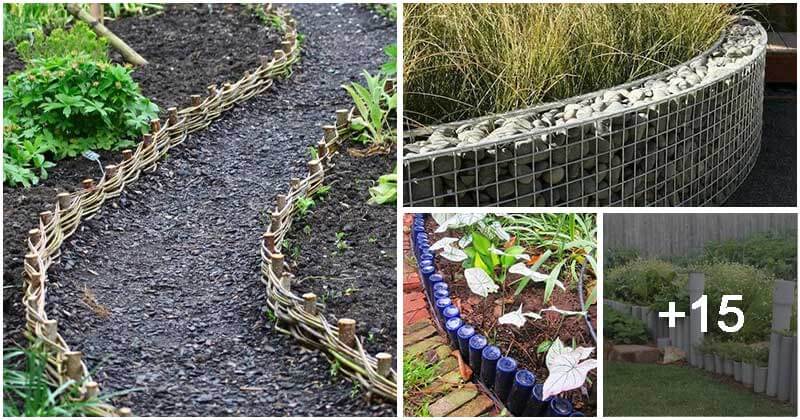Using old wine bottles as edging
Reusing old wine bottles is a great way to add a beautiful garden border. This project only requires a few materials, including wine bottles, a shovel, and water. You can watch a video for step-by-step instructions. Aside from looking beautiful, this edging will also attract native insects and be a unique feature in your yard.
First, make a trench in the ground. You can then lay out your garden border by placing the bottles side by side in the trench, halfway into the earth. You can use landscaper’s plastic edging or aluminum flashing to create a solid wall to keep the bottles in place.
Using timber blocks
Timber blocks are a simple solution to garden edging. They are strong and do not warp or rot, even in the most extreme weather conditions. Moreover, they will protect your garden from weeds and grass growth. In addition, you can add a wooden edging to your existing garden for an elegant and decorative look.
You can buy curved edging bricks from most big DIY stores and garden centres. However, they will probably cost you a little more.
Using terracotta roof tiles
If you’re looking for an easy garden edging solution, consider terracotta roof tiles. They are made from natural clay and blend with virtually any type of exterior cladding. Plus, terracotta roof tiles are both eco-friendly and energy efficient. You can even find them locally.
Terracotta roof tiles are extremely durable and can last up to 100 years if properly maintained. They require periodic cleaning and can be sealed with a polyurethane coating to increase their moisture resistance and prevent organic materials from building up. They also are an ideal choice for coastal homes because they can withstand hurricane-strength winds, and the kiln-fired clay is impervious to constant sea spray.
Using flagstones
If you’re planning on creating a garden edging using flagstones, there are a few tips you should follow. First, you should ensure that you lay your flagstones horizontally. This will prevent grass from encroaching on the flagstones. You should also avoid using irregularly shaped flagstones, since they will look haphazard and make it difficult to achieve uniform sides. Instead, opt for square or rectangular pieces for the edging. Stacking flagstones is a great way to avoid grass from encroaching on the stones, as well.
Another option is to use boulders as edging. These can be used to create a more natural look, though they can be a pain to transport and install. You can even create an informal border by stacking a few boulders in a row.
Using clay pots
Edging a garden using clay pots can be an inexpensive and easy way to define the boundary of your outdoor space. They have a great dimensional stability and are resistant to rotting and warping. They can also withstand extreme weather conditions. They can also be reused as a beautiful accent to your landscape.
Another option for edging a garden is to use bricks. These are also inexpensive and can also be used as planters. They can be laid along the perimeter of your garden, and flowering plants can be planted in the holes. If you use large blocks, you don’t need to worry about them limiting the growth of the plants you choose. In addition, you can use mulch or soil to bind the bricks together.
Using sandstone
Easy garden edging using sand stone is an excellent way to divide your flower beds and create a more aesthetically pleasing garden. This material comes in a variety of colors and textures and is highly durable. It will last for years without the need for replacement. Plus, sandstone borders are more decorative than plastic edging and will help to avoid weeds.
To mark where to place your stone edging, you can use a garden hose. This is a much more flexible option than rope and will help you see your stones from different angles. You can also use spray paint to mark the lines.
Did you miss our previous article…
https://yardworship.com/choosing-fences-and-gates/

